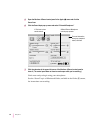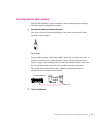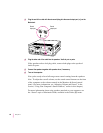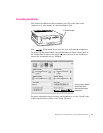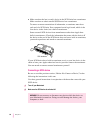
Installing PCI and other expansion cards
You can expand your computer’s capabilities by installing expansion cards
inside the computer cover. Your Macintosh has slots available for three
different kinds of expansion cards: a PCI (peripheral component interconnect)
slot for a 6.88-inch PCI card, such as a video-editing card; a communication
slot for an internal modem or Ethernet card; and a video-in slot for a video
input card, which brings signals into the computer from a videocassette
recorder (VCR) or other video input equipment. You can also install a TV/FM
tuner card that brings signals into the computer from a TV antenna or cable
TV service and an FM antenna. (Some computers come with one or more of
these cards already installed. See the opening illustration in this chapter and
match it with your computer to see if you have these cards installed.)
Instructions for installing expansion cards are provided in Chapter 8,
“Installing Expansion Cards or Additional Memory.”
Replacing or adding internal storage devices
Your Macintosh comes with at least two internal storage devices—a floppy
disk drive and a hard disk drive (several capacities are available). Most
computer models also have a CD-ROM (compact disc read-only memory)
drive installed. If you want to replace any of these internal drives, see your
Apple-authorized dealer.
Connecting to a network
This section contains information only for people whose computers are
connected to other computers through a local area network. A local area
network (LAN) lets computers communicate with each other—for example,
in businesses, it is what enables more than one computer to share a printer
and access documents on a central, shared server.
Note: Using a modem is not the same as being connected to a local area
network. If you have an internal modem and also want to connect to a local
area network, then continue reading the information in this section.
52
Chapter 3



